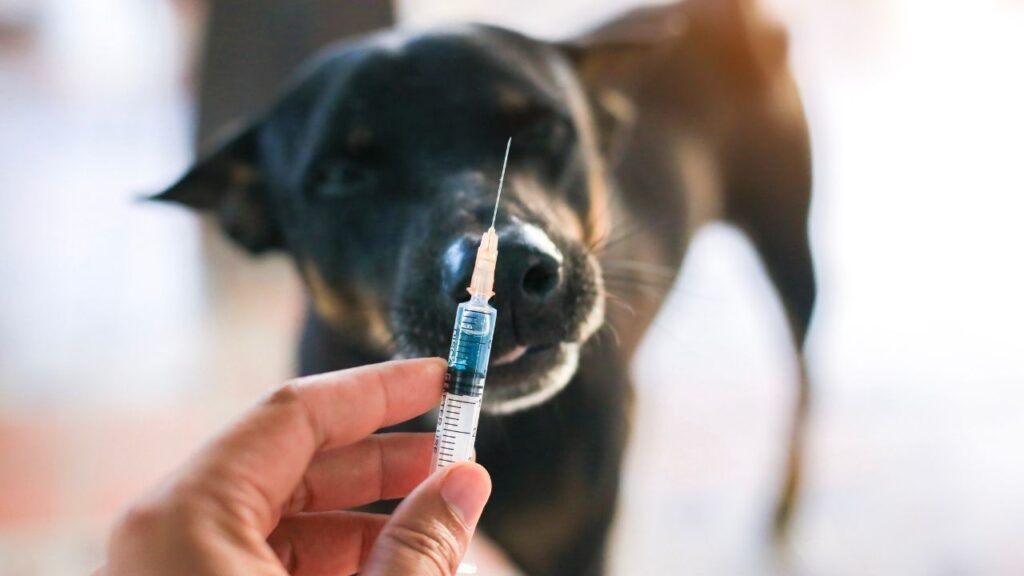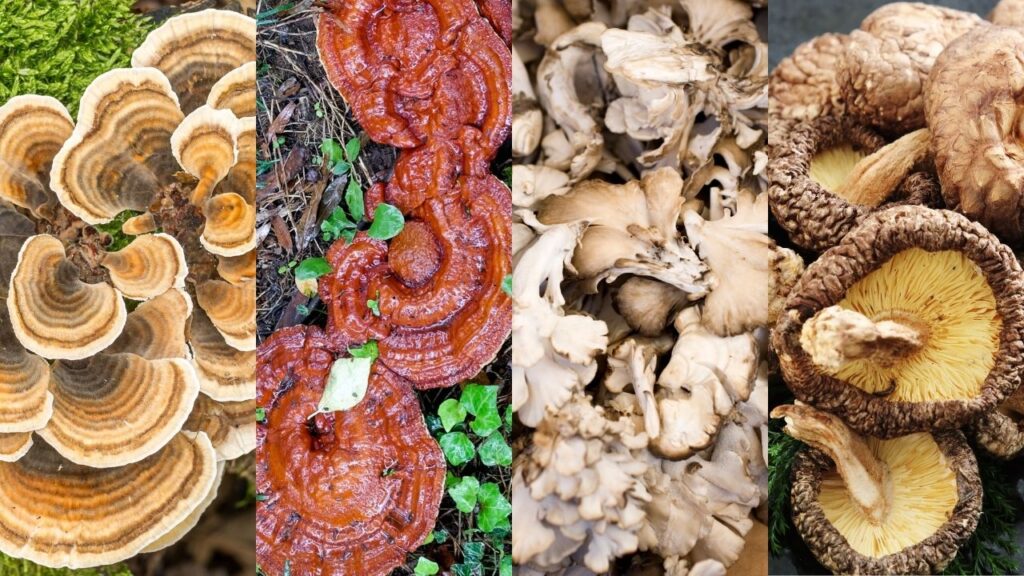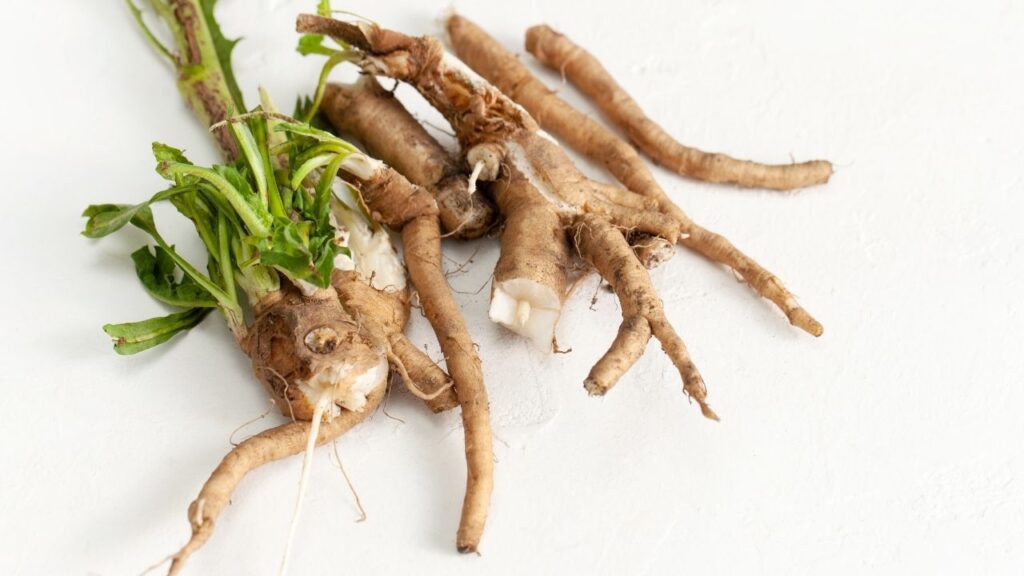Mistletoe is a natural therapy that may support and improve your dog’s quality of life while fighting canine cancer.
Key Takeaways
- Mistletoe helps to shrink tumors by killing cancer cells and making other treatments more effective.
- Mistletoe does not interfere with chemo, because it has some of the same actions. It may help achieve better results with fewer side effects when combined with chemo drugs.
- Mistletoe is poisonous to dogs when the plant is eaten. Only extracts should be used for medicinal use.
- Animals should not eat mistletoe.
- Mistletoe extract is safe for dogs when given according to veterinary instructions.
- Side effects of mistletoe include soreness, lethargy, loss of appetite, and a mild fever.
Mistletoe – Not Just for Kissing
Mistletoe is a semi-parasitic shrub that grows on a variety of host trees.1 It has been used by humans for hundreds of years and was even touted as the “all healer” by Celtic druids.2 It wasn’t until Rudolf Steiner introduced mistletoe for clinical treatment in the 1920s that it was applied to humans as a therapeutic agent to correct the imbalances causing cancer.1
There are several subspecies of mistletoe, but the two most commonly used for medicinal application are the European, or white-berry, mistletoe (Viscus album abietis) and the Asian mistletoe (Viscum album coloratum).2 The latter is less formally studied, but has been found to have similar properties to that of the European subspecies.3
Its large variety of biologically active ingredients is what makes mistletoe so powerful:2
- Lectins – Proteins that bind to carbohydrates. Lectins are known to boost the immune system and possess anti-tumor properties.
- Viscotoxins – Small proteins that are able to kill cells and stimulate the immune system.
- Flavonoids – A natural secondary metabolite known to regulate cellular activity and protect against toxins and everyday stressors faced by cells.
- Thiols – A compound that has a suite of antioxidant properties that help protect cells from oxidative damage.
- Triterpenes – A large class of natural products that carry out a range of biological activities and are known to be anti-inflammatory.
How Mistletoe Works
Research on mistletoe provides several lines of evidence for its effect on cells and cancer-fighting properties. In a meta-analysis review of over 1,200 citations in the PubMed database, studies demonstrated that mistletoe has immunomodulatory, cytotoxic, proapoptotic, anti-angiogenesis, and DNA stabilizing properties.3
Mistletoe acts on several different areas of the cell, ultimately stimulating the immune system via an immunomodulating regulating effect.2
Of the lectins found in mistletoe, ML-1 is the most predominant. This lectin molecule is comprised of two sub-units.5 While one sub-unit binds to the receptors on the surface of target cells, the other sub-unit inactivates 60S ribosomes. Ribosomes are essentially protein-making factories and the cell ultimately dies without them.
ML-1 is also known to stimulate cells that actively attack and kill tumor cells. Lectins are considered to have so much potential in the treatment of cancer that laboratories are working to create and test recombinants of them in an effort to design hard-hitting molecules that destroy cancer.3
Dr. Kendra Pope discusses how she uses oncology, acupuncture, herbs (including mistletoe!), and nutrition to fight dog cancer in this episode of Dog Cancer Answers.
Research on Mistletoe for Dogs with Cancer
Some research has been done with dogs.
One study investigated the efficacy of mistletoe extract on tumor cells harvested from canine malignant gliomas (a brain cancer).5 The extract was added to mebendazole (MBZ), a medication commonly used to treat parasites in domestic animals. This combination appeared to amplify the destruction of cancerous cells. The cells treated with MBZ and a high dose of mistletoe extract had 39.3% greater cell death than that observed in the cells only treated with MBZ.5
Another study covered the case of a 10-year-old mixed breed male dog who came in with a black skin wound and was diagnosed with melanocytic melanoma.6 The dog was prescribed a mistletoe formula that was given under the skin near the tumor site once a week for four weeks and then followed up with a modified administration plan. Even in that first four weeks the wound shrank significantly.
European vs. Asian Mistletoe
While the Asian subspecies of mistletoe has been studied and shows similar effects, it has not been studied as much as European mistletoe and its efficacy is not as well established. In a meta-analysis examining research studies on mistletoe, 32 used the European subspecies while only 5 used the subspecies native to Asia.3
Common Uses of Mistletoe for Dogs
One of the most promising aspects of mistletoe is that different formulations of varying extracts can be prescribed to treat different types of cancer.1 While mistletoe appears to work best with solid tumor cancers, such as lymphoma, mast cell tumors, and sarcomas, its wide-ranging properties will likely benefit numerous cancers.
Any cancers that have low survival rates require novel therapies, such as the administration of nutraceuticals.5 For example, malignant gliomas typically have a poor prognosis because chemotherapy treatments are thwarted by the presence of the blood-brain barrier, hypoxic (low oxygen) environments, and the existence of resistant stem-like cell subpopulations.5
When conventional treatments such as chemotherapy, surgery, and radiation fail or are prohibitively expensive to you as their owner, mistletoe may be a valuable addition to your dog’s cancer fighting therapies.7
If chemotherapy is an option for treating your dog’s cancer, mistletoe may be prescribed as a way to increase your dog’s quality of life.8 For example, mistletoe’s immune boosting properties can help counteract the immunodeficiencies caused by chemotherapy.7
Mistletoe Side Effects
Since the start of mistletoe’s clinical use in the 1920s, no negative side effects have been reported in humans.1 However, you may observe some minor side effects in your dog. These include:1
- a local reaction around the injection site
- lethargy
- loss of appetite
- mild fever
A mild fever is actually perceived as a positive sign, because it indicates that the mistletoe is stimulating your dog’s immune system to rally and destroy cancer cells.7 Keep your veterinarian informed of your dog’s temperature so they can monitor response and intervene if necessary.
Mistletoe was well-tolerated in a study of 23 dogs with mammary tumors who were treated with the supplement post-surgery9, and only two out of 18 dogs experienced adverse effects when given mistletoe as a therapeutic agent to treat cancer.8
Is your dog feeling sick, and that’s why he’s not eating? How can you tell? Integrative Oncologist Dr. Trina Hazzah explains what could cause your dog’s appetite loss.
Mistletoe Can Be Given With
Check with your veterinarian to make sure that mistletoe extract will not interfere with any of the current therapies being used to treat your dog’s cancer.
Mistletoe extract is commonly prescribed in combination with conventional therapies such as:1
In the case of surgery, it can be used as a post-operation adjuvant therapy. In a study of 56 dogs who had surgery to treat mammary adenocarcinoma, the 23 dogs who were given mistletoe were found to have a lower risk of death than the 33 dogs who were not.9
With chemotherapy, mistletoe reduced the duration and amount of chemotherapy used, and helped support the continued use of conventional drugs to fight cancer instead of having to stop treatment due to side effects.1,8
In addition to conventional therapies, mistletoe can be given with other alternative methods such as herbal medicine or acupuncture.1 It may also work well with chemicals known to disrupt the cell cycle due to its synergistic effects. For example, one study found that mistletoe given in conjunction with a medication used to prevent the division of cells in parasites can work synergistically to induce more cell death than either used alone.6
When to Not Use Mistletoe for Dogs with Cancer
Commercially manufactured mistletoe extracts should not be given to:
- Pregnant dogs10
- Older or weaker dogs (may not fare well with mistletoe use because the initial dosing schedule will result in a fever, which they may not tolerate as well as their younger and healthier counterparts)7
Mistletoe Cancer Dosage
Mistletoe extract is usually given as an injection by your veterinarian, but if you are interested you might be able to learn how to give it at home safely.
The chemical composition of mistletoe varies based on the species of host tree and the time of year that it is harvested. Commercially available preparations typically take advantage of this by mixing fresh leafy shoots harvested in summer and winter with fruits harvested in winter when the concentrations of lectins and viscotoxins are highest.11
Typically (but not always), the first round of injections will be done daily, preferably in the morning.7 A veterinarian quoted this as costing about $500 or more in 2015. Your veterinarian may do the first injections, then show you how to administer them at home.1 These shots will result in a fever that your dog will have for approximately 5 to 10 days, but shots may be given only weekly or monthly once your dog’s fever breaks.1
It could take 2 to 3 weeks to determine the best dose and dose schedule for your dog, so some patience may be needed.7

Mistletoe is given to dogs as an injectable extract – do not feed your dog mistletoe leaves or berries.
Subcutaneous (under the skin) injection sites can include the abdominal wall, chest wall, inner thigh, in close proximity to the tumor, or at specific acupuncture points using small gauge needles.1 It’s recommended that these sites are rotated to avoid irritation.1
Mistletoe extract used for maintenance therapy will depend on the type and severity of your dog’s cancer and may be done temporarily or for the remainder of your dog’s life.1 Depending on your dog’s health requirements, oral drops of mistletoe extract, as opposed to injections, may suffice for maintenance care.10
Iscador for Dogs
One example of a commercial brand of mistletoe extract is called Iscador®. This product is made for humans, but can also be used for dogs.10
Iscador is made by Iscador AG through a process that starts with harvesting mistletoe branches from four to five different host tree species, ranging in age from 12 to 15 years, in winter and summer.12,13 The branches are organized, prepared, and fed into a roller to be mechanically macerated. The aqueous extract is added to the mistletoe’s own lactic acid bacteria and fermented in a 1:1 ratio of branches collected in summer and branches collected in winter.
The company offers preparations in different varieties with constant concentrations or in a series of concentrations within one package.12
What If I Miss a Dose?
You may be able to administer the injection and then continue the next dose as usual depending on how long after you realize a dose is missed. However, if a substantial amount of time has passed, it is advised that you simply skip the dose and go about the dosing schedule as usual.
Storage and Handling
Most mistletoe preparations are stored in the refrigerator. If possible, keep the preparation in a separate compartment of your fridge, such as a vegetable drawer. Before use, you should gently warm the container in your hand.14
Some extract preparations can be stored at room temperature and should be kept in a safe place that is cool and dry.14 In either case, heat should be avoided for all types of mistletoe extract preparations.14
Chemotherapy doesn't have to be scary. Dr. Sue Ettinger, veterinary medical oncologist, answers your most burning questions about chemotherapy in this episode of Dog Cancer Answers.
Our Take on Mistletoe for Dogs
Mistletoe seems to hold a lot of promise on the cancer fighting front. Research shows that it can act on malignant tumors and increase the efficacy and outcomes of conventional treatments like chemotherapy or surgery. Its wide-ranging applications both in battling cancer and in increasing quality of life make it a potential home-run addition to your dog’s treatment plan.
While predictable and generally low risk, the side effects associated with the first round of dosing may not fare well for older or weaker dogs. In addition, owners should consider how comfortable they are giving their dogs injections, particularly with the potential lifelong commitment of maintenance injections.
Topics
Did You Find This Helpful? Share It with Your Pack!
Use the buttons to share what you learned on social media, download a PDF, print this out, or email it to your veterinarian.









